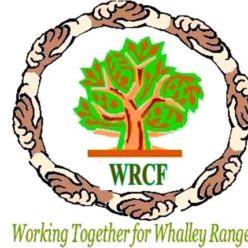Whalley Range is a diverse area of South Manchester in relation to housing type, the natural environment and population, of approximately 16,000 people. Made up of 6,500 households, over 1,000 children living in low-income families (5 times that of Chorlton) and over 2,500 people living in single households (twice that of adjoining Fallowfield).
We have the most ethnically diverse community in the city, with over 4,000 residents of Asian origin, 2,000 of African Caribbean origin, and other long-standing communities from eastern Europe, especially from Poland many arriving in the 1940s. As a result, 56% of school pupils have a first language that is not English, and we have a range of places of worship including Mosques, Sikh, Hindu and Hari Krishna temples and several Christian denominations.
The range of residential properties can be explained by our history. The area was first built on in 1836 when Samuel Brooks (born in Whalley, Lancashire) bought Jacksons Moss, an area of clay pits and peat bog, which he drained and built villas as “a desirable estate for gentlemen and their families” to escape the congestion of the city, with tree lined avenues, many with extensive sewers and drainage culverts. Whalley Range was one of Manchester’s, and probably the world’s, first suburbs. The area included farmland, large private estates and houses, large training colleges, and several churches.
By the 1960s many of the larger houses, some of which had been used as consulates, and residential homes, had become houses in multiple occupation.
By the 80’s the area had a reputation as a red-light district. Some properties fell into disrepair, were demolished and now have blocks of flats, and some small private estates.
The range of housing types has resulted in a mixture of family types and sizes. Our area has one of the highest levels of rented accommodation in the city, most of it private but there are also several housing Associations, (one of which incorporated a housing cooperative) two of which run large supported living schemes for older people.
The housing types means that there is a high level of single person households with the risks of social isolation. Conversely in some areas of the ward families experience overcrowding and the stresses that can bring.
The diversity of the population and housing type means we have particular health and wellbeing concerns.
Ten percent of the population are deemed to be in need of ‘intensive support’ (e.g., in relation to smoking, alcohol consumption, stress and anxiety) (twice that of adjoining Chorlton). In addition, we have twice the England average of deaths from coronary heart disease. Health inequalities within the black, Asian and minority ethnic communities have resulted in higher rates of mortality and morbidity from conditions such as diabetes cardiovascular disease, certain cancers such as Myeloma, prostate, liver and bowel cancer and mental health disorders. These communities have also been disproportionately affected by the Covid pandemic.
These particular health and wellbeing factors should direct the services in our area and encourage us all to make the most of and build on our assets.
The diversity of the ward also means that we have many assets.
Although lacking a central shopping area, we have several areas of shops with access to fresh fruit and vegetables, and several cafes and bars. There are five allotment areas, two parks, with Alexandra Park opened in 1870 designed to “deter the working men of Manchester from the alehouses on their day off”. Manley Park being the site of Manley Hall, and then an underground air raid shelter for 500 people in the first world war.
Several large buildings have become schools, the former Aquarium (built 1872) becoming St. Bede’s College and the former College built in 1840 for the training of non-Conformist ministers, later becoming a trade union centre and now a community focused Muslim Heritage Centre. Many of these buildings, are protected by the conservation area, designated in 1991 following residents’ campaigns to protect buildings and trees.
Much of the terraced housing around Clarendon Road was built by Welsh labourers at the end of the 19th century to house the workers for Manley Hall, situated where Manley Park is now, they also built Calfaria (the Welsh Chapel), located beside Manley Park Methodist Church.
Whalley Range has a rich history in political activism and protest, particularly in Alexandra Park – where in 1892 60,000 people marched to the park in support of a shorter working week. In 1908 Suffragettes rallied for the right to vote. Today some of these traditions continue through campaigning groups on peace and justice and for action on climate change.
There are a wealth of local community and voluntary sector organisations, age friendly and youth groups – and local street mutual aid groups, providing the opportunity to Connect with others locally and Keep Learning, be Active and Take Notice and get involved through activities and volunteering (Give). (See the 5 Ways to Wellbeing elsewhere on the Whalley Range map – new edition in progress).
